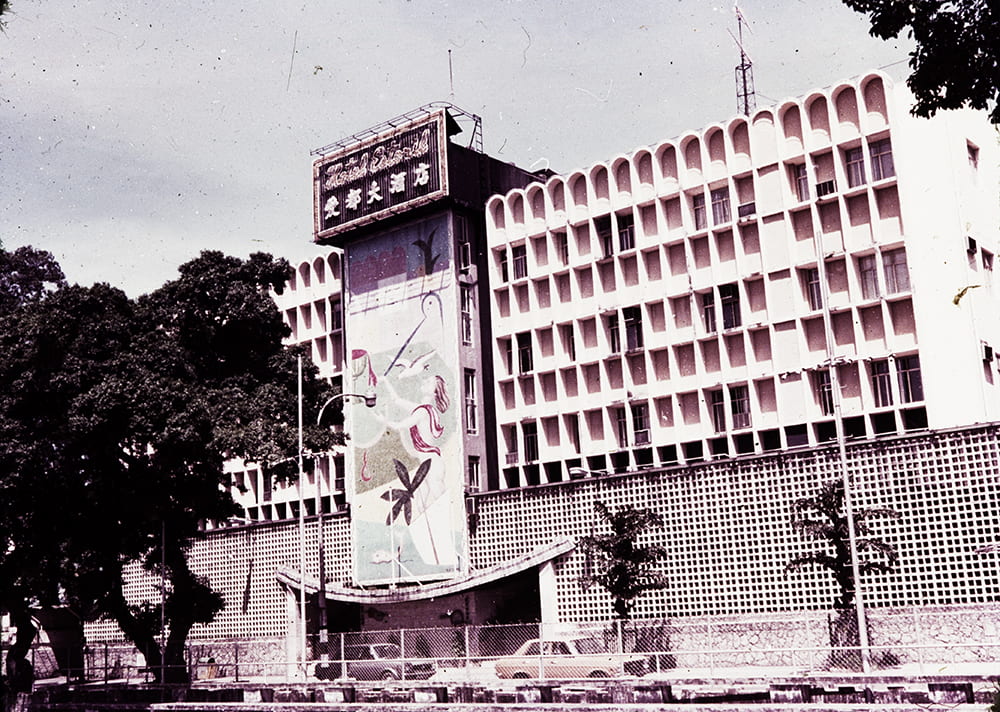Dr. Helena F. S. Lopes is a Leverhulme Early Career Research Fellow at the Department of History, University of Bristol. This posting is the final part of a three-part series on the ruins of Macau. You can read part one here and part two here.

Hotel Estoril, Macau, c.1975. HPC ref: Aw-t515.
Another image in the ‘20 colour slides of Macau scenery’ series has a rather more subtle connection to 1940s Macau when compared with the statue of Ferreira do Amaral addressed in part 2. In fact, the building depicted above is essentially associated with the post-war period.
This is a view of the Hotel Estoril with its now gone bilingual neon sign: Hotel Estoril / 愛都大酒店. The building’s origins go back to the early 1950s, though the present-day ruin dates from the 1964 reconstruction and expansion. It is often described as Macau’s first ‘modern’ casino-hotel owned by Stanley Ho’s Sociedade de Turismo e Diversões de Macau (STDM).
Those responsible for the building’s appearance illustrate the deep connections between Macau and other colonial port cities in China. The building was designed by Macau-born, Hong Kong-based architect Alfredo Victor Jorge Álvares and a particularly iconic feature is the large mural in the façade designed by Oseo Acconci, an Italian sculptor who arrived in Macau precisely in 1940 after working in Shanghai and Hong Kong. The nude female figure in the mural – considered a rare example of Futurist art in Macau – has generated its fair share of controversy, as has the case for preserving the hotel, which remains abandoned since the 1990s and is planned to be redeveloped as a new Central Library.[1]
At present, Macau has the largest gaming industry in the world. This snapshot of this relatively ‘young’ local ruin, whose golden days lasted less than a decade (until the Casino Lisboa outshone it from the 1970s) but which can be seen, in a way, as pioneering the casino resorts now seen throughout the territory, is perhaps a fitting way to end this three-part series on some of the changes and continuities, rebuilding and disappearances, one find represented in the HPC Macau photographs.
[1] Sonia Nunes, ‘Macau’s Futurist Woman’, Macau Closer, Dec. 2015; Philip Feifan Xie and William Ling Shi, ‘Authenticating a Heritage Hotel: Co-Creating a New Identity’, Journal of Heritage Tourism 14/1 (2019); pp. 67-80; ‘New Macao Central Library to be built on former Hotel Estoril site’, Macau News 10 Sept. 2020.
